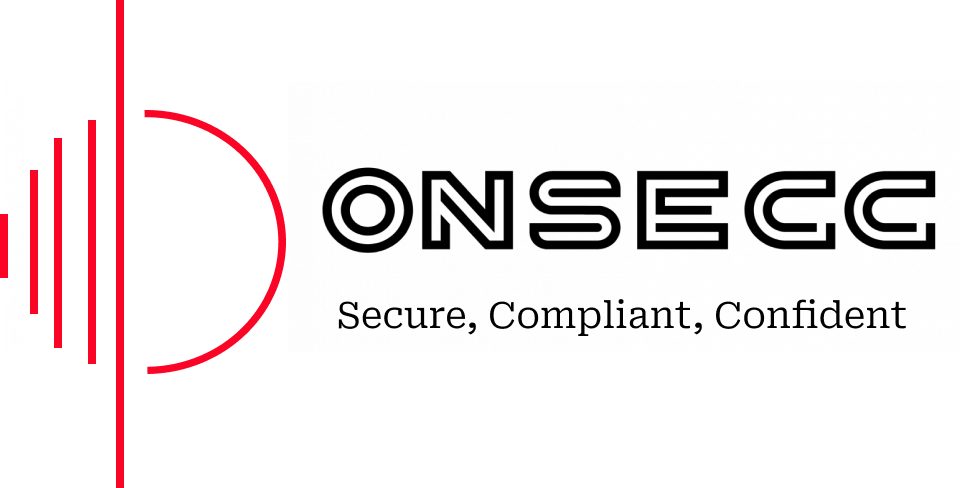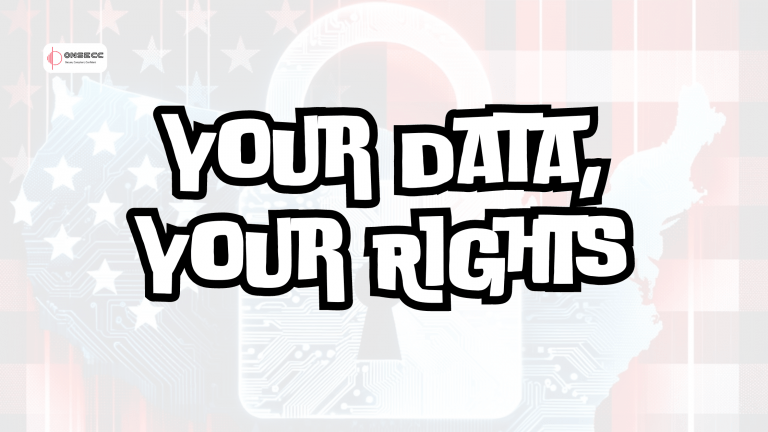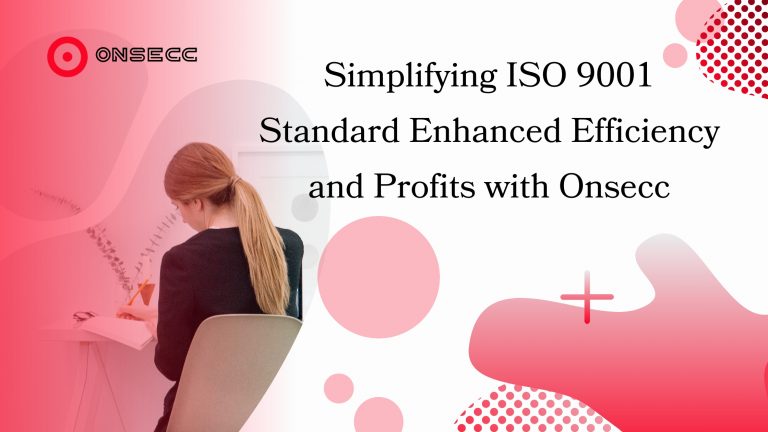Navigating NIST Cybersecurity Framework with Onsecc
Step into the realm of digital fortification with the NIST Cybersecurity Framework as your guardian. Explore how Onsecc’s expertise can transform your cyber defences into an impenetrable fortress. Discover the path to safeguarding your digital world, where trust meets technology, in our insightful article. Join us on a journey to secure your future.
In This Article:
- Introduction to NIST Cybersecurity Framework Compliance
- Understanding NIST Cybersecurity Framework Basics
- Assessing Your Organization’s Cybersecurity Maturity
- Implementing Onsecc’s Methodology for Compliance
- Step-by-Step Guide to Fulfill NIST Cybersecurity Framework Requirements
- Leveraging Onsecc’s Technology Solutions for Compliance
- Mitigating Common Compliance Challenges With Onsecc’s Assistance
- Auditing and Certifying Compliance with Onsecc’s Support
- Benefits of Continuous Monitoring and Maintenance with Onsecc
- Summary
- FAQs
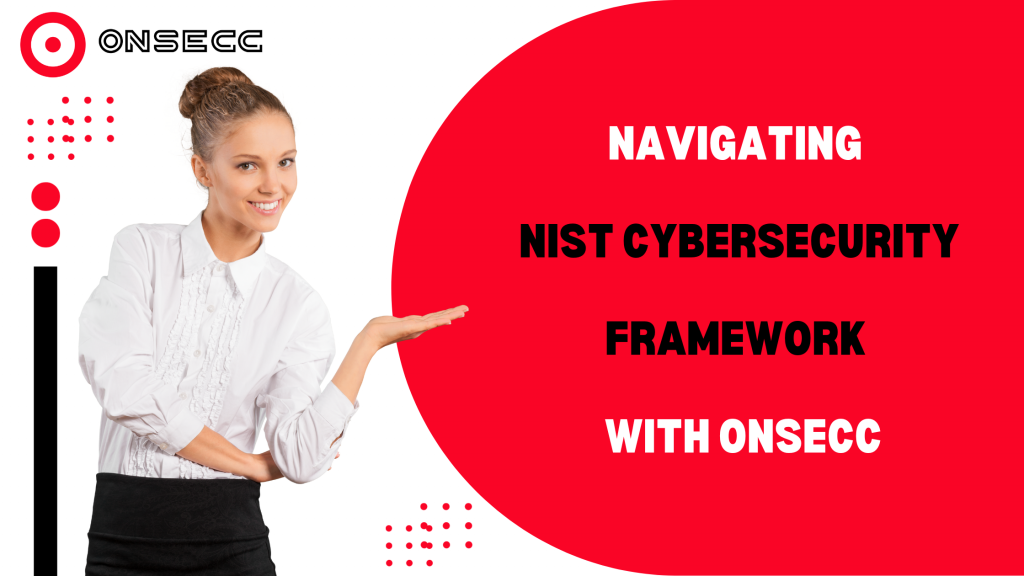
Also Read: The NIST Cybersecurity Framework: Is Your Organization Prepared for the Worst?
Introduction to NIST Cybersecurity Framework Compliance
In today’s digital landscape, ensuring robust cybersecurity measures is of paramount importance for organizations across all industries. NIST Cybersecurity Framework (NIST CSF) Compliance has emerged as a vital framework to protect vital data, mitigate risks, and safeguard against cyber threats. This article explores the significance of NIST CSF Compliance and discusses how Onsecc, a leading cybersecurity solutions provider, can assist organizations in achieving and maintaining compliance.
Why NIST Cybersecurity Framework Compliance is Essential
NIST CSF Compliance is essential for organizations to safeguard their infrastructure, data, and reputation from the ever-evolving threat landscape. It provides a structured approach to cyber risk management and serves as a guide for implementing effective cybersecurity strategies. With NIST CSF Compliance, organizations can enhance their resilience against cyberattacks, comply with regulatory requirements, and strengthen stakeholder trust.
Onsecc’s Role in Assisting Organizations
Onsecc understands the complex challenges organizations face in achieving NIST CSF Compliance. As a trusted and experienced cybersecurity partner, Onsecc offers end-to-end solutions to help organizations navigate the compliance journey successfully. By leveraging its expertise and innovative technologies, Onsecc empowers organizations to proactively address vulnerabilities, enhance security posture, and align with industry standards.
Understanding NIST Cybersecurity Framework Basics
Overview of NIST Cybersecurity Framework
The NIST CSF is a robust set of guidelines, best practices, and standards designed to help organizations manage and mitigate cyber risks effectively. Developed by the National Institute of Standards and Technology (NIST), the framework provides a flexible and adaptable approach that aligns cybersecurity actions with business strategies, risk tolerance, and available resources.
Core Functions of the NIST Cybersecuriy Framework
The NIST CSF framework comprises five core functions that form the foundation of robust cybersecurity practices:
- Identify: This function involves understanding the organization’s assets, risks, and systems to develop an effective risk management strategy.
- Identifying critical assets and data that require protection.
- Assessing potential risks and vulnerabilities.
- Protect: The protect function focuses on implementing safeguards to limit or prevent potential cybersecurity incidents.
- Establishing access controls and encryption measures.
- Implementing secure configuration management practices.
- Detect: This function aims to identify potential cybersecurity events promptly.
- Implementing monitoring systems and intrusion detection techniques.
- Conducting regular vulnerability assessments.
- Respond: In the event of a cybersecurity incident, organizations must have an efficient response plan.
- Developing an incident response plan and a clear chain of command.
- Implementing procedures for timely detection, containment, and eradication of threats.
- Recover: The recovery function focuses on restoring systems and services promptly after a cybersecurity incident, minimizing damage and downtime.
- Developing robust backup and restoration strategies.
- Testing incident recovery plans regularly.
Benefits of Adopting NIST Cybersecurity Framework
Adopting the NIST CSF offers several advantages for organizations:
- Enhanced Cybersecurity Posture: By adhering to the framework, organizations can identify and address cybersecurity risks effectively, significantly improving their security posture.
- Regulatory Compliance: NIST CSF Compliance helps organizations align with various industry regulations, such as HIPAA, GDPR, and PCI DSS, to avoid penalties and maintain regulatory compliance.
- Standardization: The framework provides a common language and approach for cybersecurity practices, promoting consistent implementation across industries and enhancing collaboration.
- Risk Mitigation: NIST CSF provides a proactive approach to identify and mitigate cyber risks, reducing the potential for financial loss, reputational damage, or operational disruptions.
Assessing Your Organization’s Cybersecurity Maturity
Conducting a Comprehensive Cybersecurity Assessment
Before embarking on the journey towards NIST CSF Compliance, it is essential to conduct a comprehensive cybersecurity assessment. This assessment allows organizations to evaluate their current security posture, identify vulnerabilities, and prioritize remediation efforts effectively. Onsecc can assist in performing thorough assessments, leveraging their expertise to ensure all critical areas are evaluated.
Identifying Gaps and Vulnerabilities
During the assessment process, it is crucial to identify any gaps or vulnerabilities in the organization’s cybersecurity defenses. Onsecc utilizes advanced scanning techniques, penetration testing, and vulnerability assessments to pinpoint weaknesses and provide actionable recommendations for improvement.
Establishing a Baseline for Compliance
By conducting a thorough assessment and identifying vulnerabilities, organizations can establish a baseline for compliance. This baseline serves as a starting point for implementing appropriate cybersecurity measures. Onsecc assists organizations in defining this compliance baseline and developing a roadmap to achieve NIST CSF requirements effectively.
Implementing Onsecc’s Methodology for Compliance
Partnering With Onsecc for Effective Compliance
Partnering with Onsecc ensures organizations have access to a reputable and knowledgeable team of cybersecurity professionals. By collaborating with Onsecc, organizations can leverage their expertise in NIST CSF Compliance and benefit from their tailored solutions and consultancy services.
Onsecc’s Structured Approach to NIST Cybersecurity Framework
Onsecc follows a structured approach to guide organizations toward NIST CSF Compliance. Their methodology involves the following steps:
- Gap analysis and risk assessment: Onsecc conducts a comprehensive analysis of existing cybersecurity practices, assessing the gaps and risks that need to be addressed.
- Remediation planning and implementation: Based on the analysis, Onsecc develops a remediation plan and assists organizations in implementing the necessary security controls and practices.
- Documentation and policy development: Onsecc helps organizations develop robust policies, procedures, and documentation required for NIST CSF Compliance.
- Training and awareness programs: Onsecc offers customized training and awareness programs to educate employees about cybersecurity best practices and their role in maintaining compliance.
Mapping Framework Requirements to Your Organization’s Infrastructure
Onsecc understands that each organization’s infrastructure is unique. Consequently, they collaborate closely with organizations to meticulously map NIST CSF Compliance requirements to their specific infrastructure. This ensures that cybersecurity measures are precisely aligned with their business goals and technology environment.
Step-by-Step Guide to Fulfill NIST Cybersecurity Framework Requirements
Ensuring NIST CSF Compliance requires organizations to address several critical requirements. Let’s explore these requirements in detail:
A. Identify and Prioritize Critical Assets
Organizations must identify their critical assets, both tangible and intangible. This includes data, systems, intellectual property, and third-party dependencies. By prioritizing these assets, organizations can allocate resources effectively and implement appropriate security measures.
B. Establish Risk Management Practices
Implementing risk management practices is crucial to mitigating cybersecurity threats effectively. Organizations should identify and assess potential risks, establish risk tolerance levels, and develop strategies to manage and respond to these risks.
C. Develop Effective Access Controls
Access controls play a vital role in protecting sensitive data and systems from unauthorized access. Creating strong access control policies, including multi-factor authentication, role-based access, and regular access reviews, is essential for maintaining utmost security.
D. Implement Continuous Monitoring Procedures
To ensure ongoing compliance and security, organizations must implement continuous monitoring procedures. This involves implementing automated monitoring tools, performing regular vulnerability assessments, and continuously reviewing security logs and event alerts.
E. Create Incident Response and Recovery Plans
Developing thorough incident response and recovery plans is critical for minimizing the impact of cybersecurity incidents. Organizations should establish a well-defined incident response team, establish clear communication channels, and regularly test and update incident response plans.
F. Educate and Train Employees on Cybersecurity Best Practices
Employees play a significant role in maintaining cybersecurity. By providing cybersecurity training and awareness programs to employees, organizations can ensure their workforce is equipped with the knowledge and skills to detect and respond appropriately to potential threats.
G. Ensure Supply Chain Security
Organizations must extend their cybersecurity efforts to their supply chain. By implementing supply chain security practices, organizations can bolster their defenses. Moreover, by performing due diligence when selecting third-party vendors, they can further minimize the risk of cybersecurity incidents originating from their supply chain.
H. Develop Business Continuity and Disaster Recovery Strategies
Incorporating business continuity and disaster recovery strategies into cybersecurity practices is vital. Organizations should develop robust plans to ensure the timely recovery of critical systems and data in the event of a cyber incident or natural disaster.
Leveraging Onsecc’s Technology Solutions for Compliance
Introduction to Onsecc’s Cybersecurity Tools
Onsecc offers a range of cutting-edge cybersecurity tools designed to assist organizations in achieving and maintaining NIST CSF Compliance. These tools encompass the following capabilities:
- Vulnerability Scanning: Onsecc’s vulnerability scanning tools help organizations identify and assess potential vulnerabilities in their infrastructure, providing detailed reports for effective remediation.
- Penetration Testing: Onsecc conducts penetration testing to mimic real-world cyber-attacks and identifies potential weaknesses in an organization’s systems and network, ensuring proactive security measures are in place.
Onsecc’s Security Incident and Event Management (SIEM) Solutions
Onsecc’s SIEM solutions provide organizations with real-time visibility into their network, allowing them to detect and respond to potential security incidents promptly. Additionally, these solutions enable organizations to comply with regulatory requirements for event log monitoring and reporting.
Onsecc’s Threat Intelligence and Monitoring Capabilities
Onsecc utilizes advanced threat intelligence frameworks and monitoring tools to proactively detect emerging threats and vulnerabilities. By monitoring the threat landscape, Onsecc helps organizations stay one step ahead of potential cyber adversaries.
Mitigating Common Compliance Challenges With Onsecc’s Assistance
Addressing Resource Limitations
Onsecc understands that organizations may face resource limitations, making achieving compliance challenging. To remedy this, Onsecc offers scalable solutions and adaptable strategies to accommodate organizations of all sizes. By tailoring their services to meet specific resource constraints, Onsecc ensures that compliance remains achievable and sustainable for organizations.
Overcoming Technical Obstacles
Technical obstacles, such as complex infrastructure, legacy systems, or lack of cybersecurity expertise, can hinder compliance efforts. Onsecc’s team of experts possesses comprehensive technical knowledge and experience to navigate through these challenges effectively, assisting organizations in implementing appropriate solutions and overcoming technical obstacles.
Navigating Regulatory Changes with Onsecc’s Expertise
The regulatory landscape surrounding cybersecurity is continually evolving. Onsecc stays up-to-date with the latest regulatory requirements and industry standards, helping organizations adapt to changes seamlessly. By leveraging their expertise, Onsecc ensures organizations remain compliant and well-prepared for any regulatory changes.
Auditing and Certifying Compliance with Onsecc’s Support
Understanding Compliance Audits and Certification Processes
Compliance audits and certification processes are critical milestones in achieving NIST CSF Compliance. Onsecc guides organizations through these processes, providing comprehensive support and expertise to ensure successful audits and certifications.
How Onsecc Assists in Preparation for Audits
Onsecc assists organizations in preparing for compliance audits by conducting internal audits and assessments ahead of time. These internal audits help identify any potential gaps or vulnerabilities, allowing organizations to proactively address them before the external audit.
Achieving and Maintaining Compliance Certification with Onsecc’s Help
Onsecc’s expertise in compliance certification processes allows organizations to navigate through the complexities and requirements efficiently. By partnering with Onsecc, organizations can streamline their efforts and achieve and maintain compliance certification successfully.
Benefits of Continuous Monitoring and Maintenance with Onsecc
Ensuring Ongoing Compliance and Security
Continuous monitoring is a crucial component in maintaining compliance and security. Onsecc provides organizations with monitoring solutions that offer real-time visibility into their infrastructure, allowing them to identify and respond to emerging threats promptly.
Detecting and Responding to Emerging Threats
Cyber threats are consistently evolving, making continuous monitoring essential. Onsecc’s monitoring solutions ensure that organizations are actively monitoring their systems, detecting any potential threats or suspicious activities, and responding swiftly to mitigate risks.
Taking Advantage of Onsecc’s Proactive Approach to Cybersecurity
Onsecc’s proactive approach to cybersecurity enables organizations to stay one step ahead of potential threats. By leveraging their expertise and innovative technologies, organizations can benefit from Onsecc’s proactive measures, identifying and mitigating risks before they lead to significant security incidents.
Summary: NIST Cybersecurity Framework is VITAL
Achieving NIST CSF Compliance is a vital step in fortifying an organization’s cybersecurity posture. With Onsecc’s assistance, organizations can navigate the complex landscape of compliance effortlessly. By conducting comprehensive assessments, implementing effective cybersecurity measures, leveraging innovative technologies, and providing ongoing support, Onsecc empowers organizations to not only achieve NIST CSF Compliance but also enhance their overall security and resilience.
Contact info
- 3rd Floor, 86-90 Paul Street, London, EC2A 4NE, UK
- +44-2034880245
- hello@onsecc.com
Share Blog On
Recent Posts:
-
 Cyber Insurance for Small Businesses: What You Don't Know Could Cost You Everything
Cyber Insurance for Small Businesses: What You Don't Know Could Cost You Everything -
 Meet AkiraBot: The AI Spam Demon Haunting 420,000 Websites (and Counting)
Meet AkiraBot: The AI Spam Demon Haunting 420,000 Websites (and Counting) -
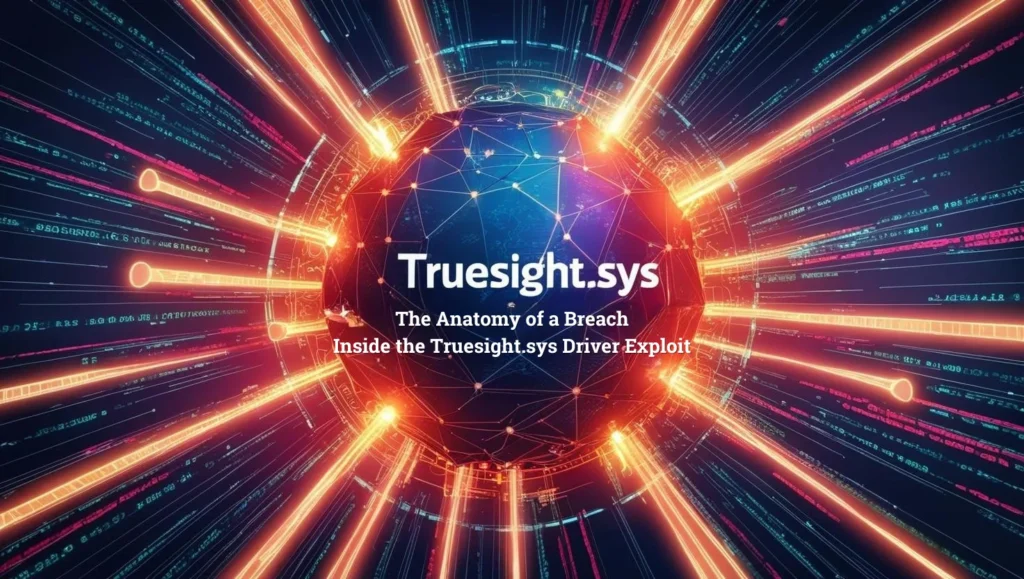 2,500 Faces of Deceit: The Proliferation of Malicious Truesight.sys Variants
2,500 Faces of Deceit: The Proliferation of Malicious Truesight.sys Variants -
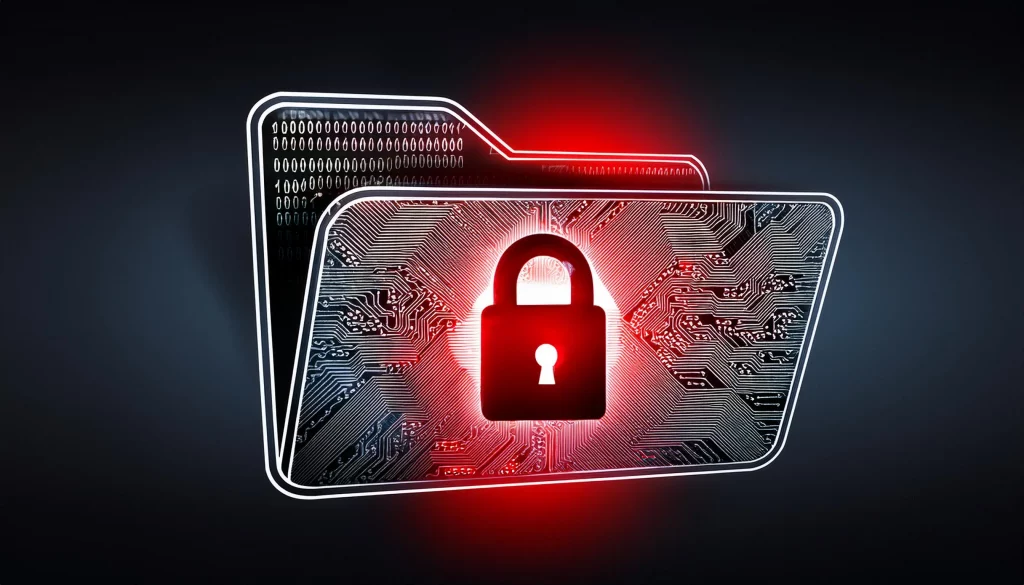 Zero-Day Vulnerabilities: The Invisible Threat Redefining Cybersecurity
Zero-Day Vulnerabilities: The Invisible Threat Redefining Cybersecurity -
 The Middle East’s Cybersecurity Gap: Building Defenses for a Digital Future
The Middle East’s Cybersecurity Gap: Building Defenses for a Digital Future -
 The Cost of Non-Compliance: What the TfL Cyber Attack Teaches Us
The Cost of Non-Compliance: What the TfL Cyber Attack Teaches Us -
 GDPR in the United States: A Do or Die Situation for Businesses
GDPR in the United States: A Do or Die Situation for Businesses -
 Is Your Business PCI Compliance Certified? Don’t Risk It!
Is Your Business PCI Compliance Certified? Don’t Risk It!
NIST Cybersecurity Framework: FAQs
NIST CSF compliance entails adhering to a set of guidelines, best practices, and standards formulated by the National Institute of Standards and Technology (NIST) to effectively manage and mitigate cybersecurity risks in organizations.
Onsecc offers a range of services, including assessments, gap analysis, remediation planning, cybersecurity training, and the implementation of tailored compliance solutions. Their expertise and innovative technologies ensure organizations achieve NIST compliance effectively.
The NIST CSF consists of five core functions: Identify, Protect, Detect, Respond, and Recover. These functions provide a holistic approach to managing and mitigating cybersecurity risks.
Onsecc works closely with organizations to understand their unique infrastructure and business goals. By leveraging their expertise, Onsecc ensures compliance requirements are effectively mapped to the organization’s infrastructure, allowing for tailored solutions and enhanced cybersecurity measures.
Common challenges include resource limitations, technical obstacles, and keeping up with regulatory changes. Onsecc addresses these challenges by offering scalable solutions, leveraging their technical expertise, and staying up-to-date with regulatory requirements, ensuring compliance remains achievable and sustainable.
Continuous monitoring ensures ongoing compliance and security by detecting and responding to emerging threats promptly. Onsecc provides monitoring solutions that offer real-time visibility into an organization’s infrastructure, enabling timely detection and response to potential threats.
